The fine tuning of pain thresholds: a sophisticated double alarm system
- PMID: 20428245
- PMCID: PMC2859063
- DOI: 10.1371/journal.pone.0010269
The fine tuning of pain thresholds: a sophisticated double alarm system
Abstract
Two distinctive features characterize the way in which sensations including pain, are evoked by heat: (1) a thermal stimulus is always progressive; (2) a painful stimulus activates two different types of nociceptors, connected to peripheral afferent fibers with medium and slow conduction velocities, namely Adelta- and C-fibers. In the light of a recent study in the rat, our objective was to develop an experimental paradigm in humans, based on the joint analysis of the stimulus and the response of the subject, to measure the thermal thresholds and latencies of pain elicited by Adelta- and C-fibers. For comparison, the same approach was applied to the sensation of warmth elicited by thermoreceptors. A CO(2) laser beam raised the temperature of the skin filmed by an infrared camera. The subject stopped the beam when he/she perceived pain. The thermal images were analyzed to provide four variables: true thresholds and latencies of pain triggered by heat via Adelta- and C-fibers. The psychophysical threshold of pain triggered by Adelta-fibers was always higher (2.5-3 degrees C) than that triggered by C-fibers. The initial skin temperature did not influence these thresholds. The mean conduction velocities of the corresponding fibers were 13 and 0.8 m/s, respectively. The triggering of pain either by C- or by Adelta-fibers was piloted by several factors including the low/high rate of stimulation, the low/high base temperature of the skin, the short/long peripheral nerve path and some pharmacological manipulations (e.g. Capsaicin). Warming a large skin area increased the pain thresholds. Considering the warmth detection gave a different picture: the threshold was strongly influenced by the initial skin temperature and the subjects detected an average variation of 2.7 degrees C, whatever the initial temperature. This is the first time that thresholds and latencies for pain elicited by both Adelta- and C-fibers from a given body region have been measured in the same experimental run. Such an approach illustrates the role of nociception as a "double level" and "double release" alarm system based on level detectors. By contrast, warmth detection was found to be based on difference detectors. It is hypothesized that pain results from a CNS build-up process resulting from population coding and strongly influenced by the background temperatures surrounding at large the stimulation site. We propose an alternative solution to the conventional methods that only measure a single "threshold of pain", without knowing which of the two systems is involved.
Conflict of interest statement
Figures
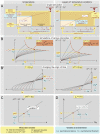
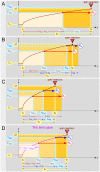

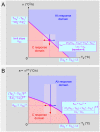
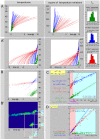




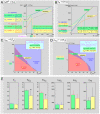



References
-
- Nagasako EM, Oaklander AL, Dworkin RH. Congenital insensitivity to pain: an update. Pain. 2003;101:213–219. - PubMed
-
- Kavaliers M. Evolutionary and comparative aspects of nociception. Brain Res Bull. 1988;21:923–931. - PubMed
-
- Walters ET. Injury-related behavior and neuronal plasticity: an evolutionary perspective on sensitization, hyperalgesia, and analgesia. Int Rev Neurobiol. 1994;36:325–427. - PubMed
-
- Vriens J, Owsianik G, Voets T, Droogmans G, Nilius B. Invertebrate TRP proteins as functional models for mammalian channels. Pflugers Arch. 2004;449:213–226. - PubMed
-
- Dhaka A, Viswanath V, Patapoutian A. Trp ion channels and temperature sensation. Annu Rev Neurosci. 2006;29:135–161. - PubMed
Publication types
MeSH terms
LinkOut - more resources
Full Text Sources

